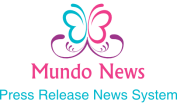The simplest flow chart maker? We will review the top ones and choose the one that we think is the best.
Gliffy’s clean and simple interface makes building data-driven flowcharts intuitive. Gliffy diagram and flowchart software is a drag-and-drop based diagram building that lets you sketch and share your flowchart ideas with little to no fuss. Templates and themes are available for time-saving starting points and the ability to preserve and track changes will make sure you never lose something important. Gliffy nails many of the requirements we have in the evaluation criteria for features and functionality: Intuitive interface, including for object importing; shapes conveniently snap to grid; revisions can be rolled back in the event of an error, and it has easy editing and sharing capabilities. Gliffy software integrates with many other apps, including WordPress, Jira Software and Jira Service Desk, Lucidchart, Atlassian Confluence, Bitium, and Nuclino.
Draw.io is an online tool for drawing process diagrams, flowcharts, ER diagrams, etc. It is free and open source. The tool provides an extensive library for shapes. It can be used on desktops as well as on mobiles. It is compatible with all browsers. Best for IT or engineering, businesses, freelancers, and project management & design tasks. Price: Lucid Chart offers four pricing plans i.e. Basic, Pro, Team, and Enterprise. The Basic plan is for a single user and will cost you $4.95 per month. The Pro plan is also for a single user which will cost you $9.95 per month. The Team plan starts at $27 per month. Get a quote for the Enterprise plan.
Business users often don’t work in isolation, and Cacoo by Nulab is a charting solution built to address that need, among others. It’s an online tool that interfaces to a wide range of cloud services, including Google Drive/Docs, Confluence, Adobe Creative Cloud, Box and Dropbox. In addition to Cloud stored and distributed content, Cacoo also works with TypeTalk (another Nulab product) and Slack to enable an information flow that alerts other team members when a diagram is updated. The number of templates might be less than other products, but it has all the critical ones like Network diagrams, organisational charts and floor plans. Read additional info on online flowchart creator.
In the year 1949, flowchart began to be used for planning computer programs and quickly became one of the most popular tools in designing computer algorithms and programs. Nowadays, flow chart is an important productivity tool, serving employees in various industries and functions. Flowchart is a very intuitive method to describe processes. As such, in most cases, you don’t need to worry too much about the standards and rules of all the flowchart symbols. In fact, a simple flowchart, constructed with just rectangular blocks and flowlines, can already get most jobs done.
In simple terms, flowchart or flow chart, is a type of diagram that describe processes. These diagrams compose of blocks, often rectangular, connected by arrows. The blocks contain information of a step in a process. In such way, flow charts help keep the information of a process clear and concise. It’s not clear who was the original inventor of flowcharts, but the first standardized documentation on flow chart was first introduced by Frank and Lillian Gilbreth. In 1921, the couple presented the graphic-based method in a presentation titled: “Process Charts: First Steps in Finding the One Best Way to do Work”, to members of the American Society of Mechanical Engineers (ASME). See more information on https://www.zenflowchart.com/.
